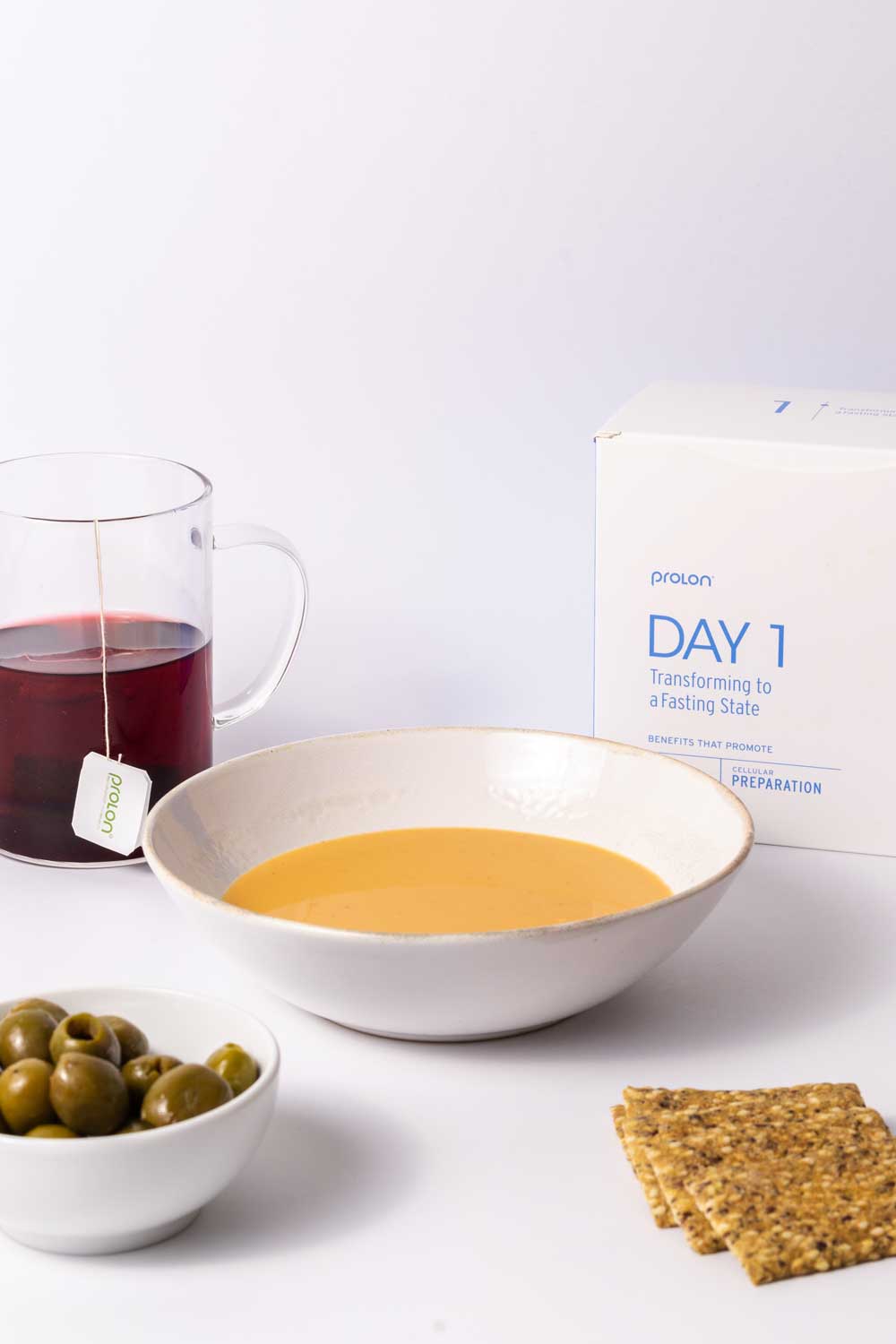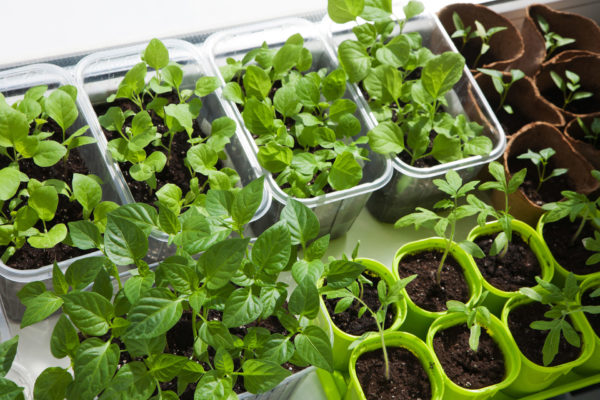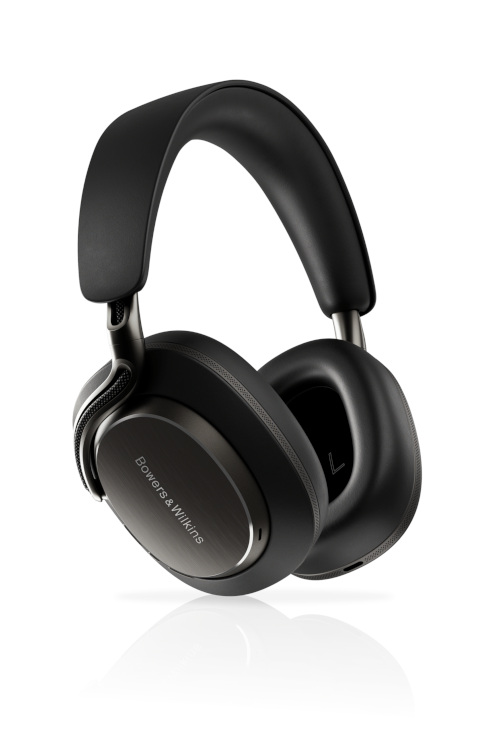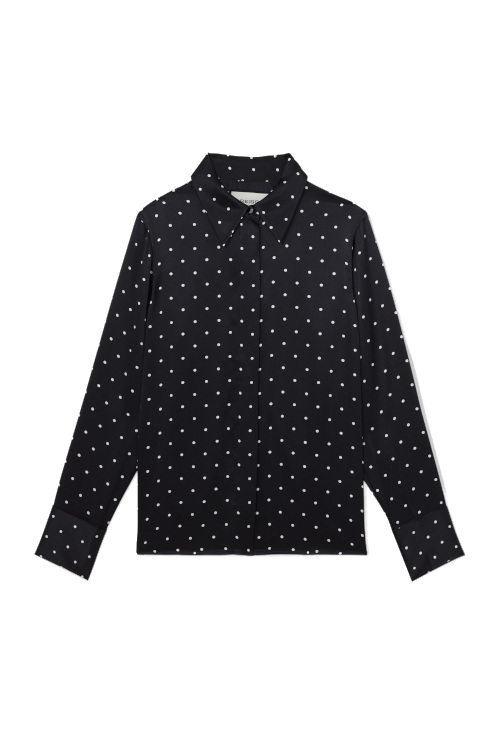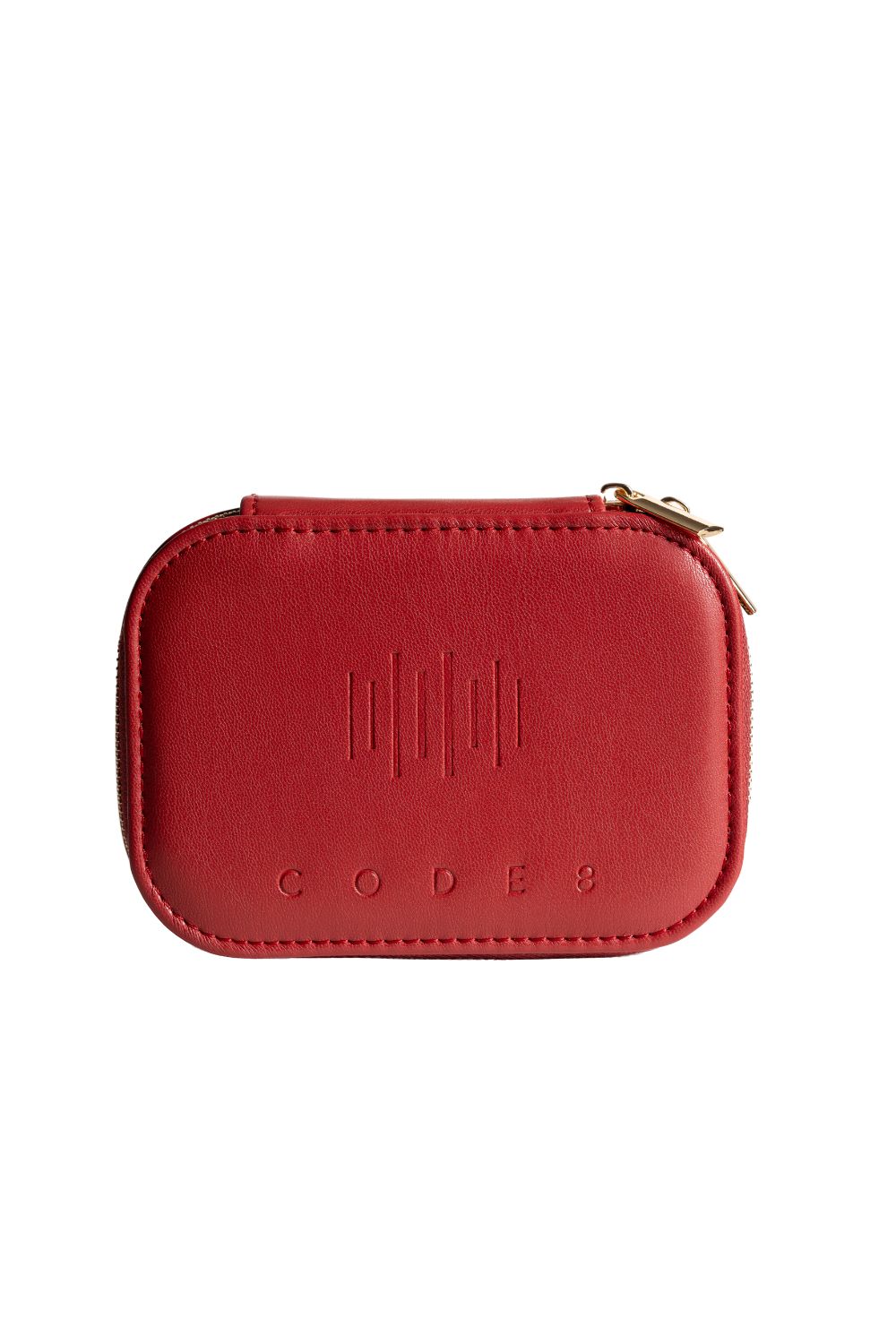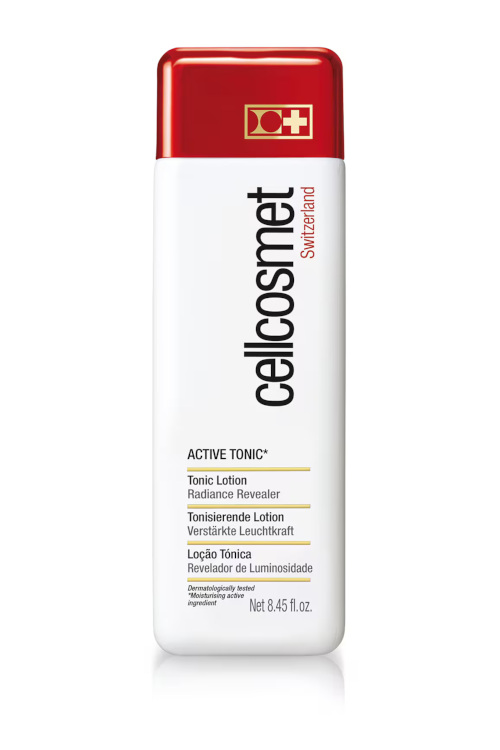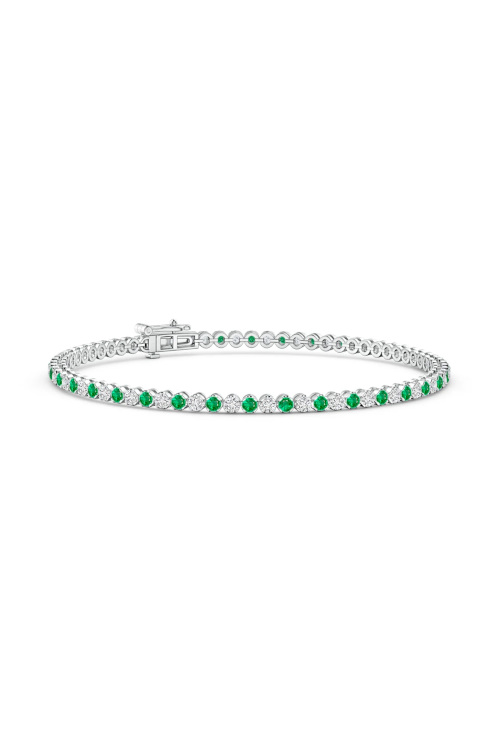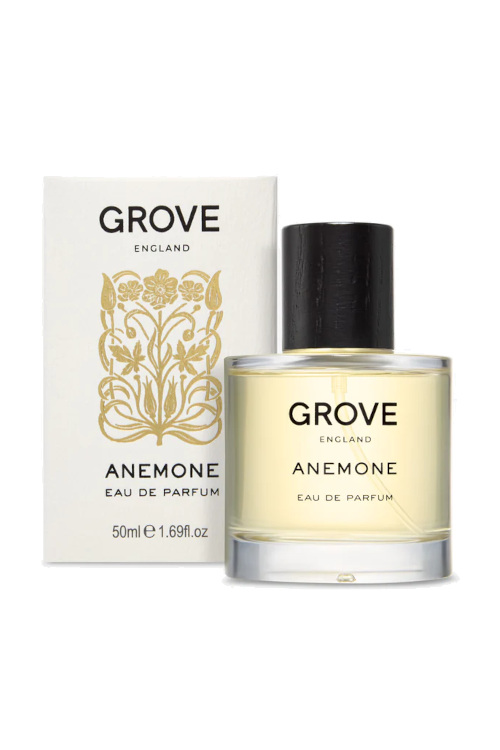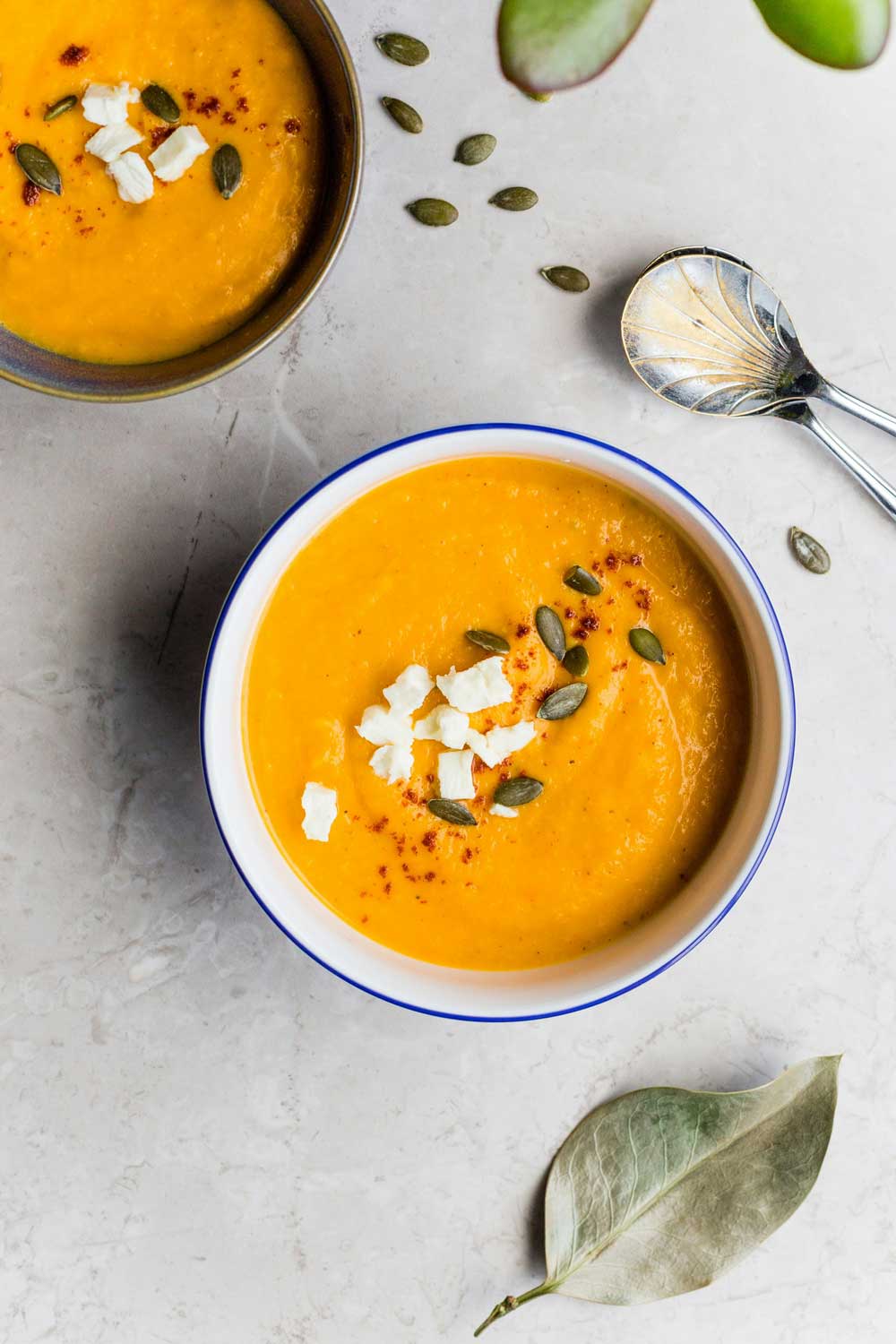
I Tried The Trending ProLon 5-Day Fasting Diet
By
5 months ago
…And I was surprised at what happened
Fasting has been gaining popularity for the last few years, not just for its weight loss benefits but for its potential to improve cell regeneration and longevity. But if not eating for days on end doesn’t appeal, a five-day plant-based Fasting Mimicking Diet (FMD) called ProLon promises the benefits of abstaining from food, without actually stopping eating altogether. The diet has gained fans including Eva Longoria, Kate Hudson, and Gwyneth Paltrow, for its rejuvenating effects, and it has been appearing more and more across TikTok in 2025, with influencers raving about its effects (before sharing an affiliate link to buy it, typically). So, does it actually work? And in this case, what does ‘work’ actually mean? Rebecca Cox gives it a test run to find out.
The ProLon 5-Day Fast
I should state from the beginning that when I signed up to test ProLon, I didn’t need to lose weight or overcome any particularly problematic eating habits. I snack way too much and eat too many crisps and biscuits, but I’m slim and active and said ‘yes’ to ProLon for its promised health benefits, rather than to lose weight. However, I did dig out the scales to do a before and after, so that I could measure any weight loss, too.
What Is ProLon?
The ProLon Diet FMD was designed to provide the benefits of fasting while still allowing participants to eat. The plan was developed over two decades of research led by Dr. Valter Longo at the University of Southern California’s Longevity Institute and is the first patented protocol that provides nourishment without triggering ‘food-sensing pathways’. Essentially, your body remains in a fasting state, but you can still have some food over the course of the five days. The most impressive medical study backing ProLon found that three cycles of the five-day programme taken once monthly could reduce biological age by 2.5 years on average, helping to rejuvenate the immune system and reduce risk factors for diabetes and heart disease, without muscle loss.
What Do You Eat?
The diet is low-calorie, gluten-free, and low-glycemic, recommended for periodic use three to six times per year. The programme includes prepackaged meals that you eat to a set plan. There’s a nut bar for breakfast and then a vegetable-based soup for lunch and dinner, with fruit teas and supplements plus a couple of snacks like olives or crackers.
It is recommended that you eat healthily for the few days before you start, with plenty of fresh seasonal fruit and vegetables. So I made myself a large vegan chilli the night before commencing. (Which I followed with a large bag of cheese Doritos and half a tub of hummus. It was going to be a long five days.)
My ProLon Diet Diary
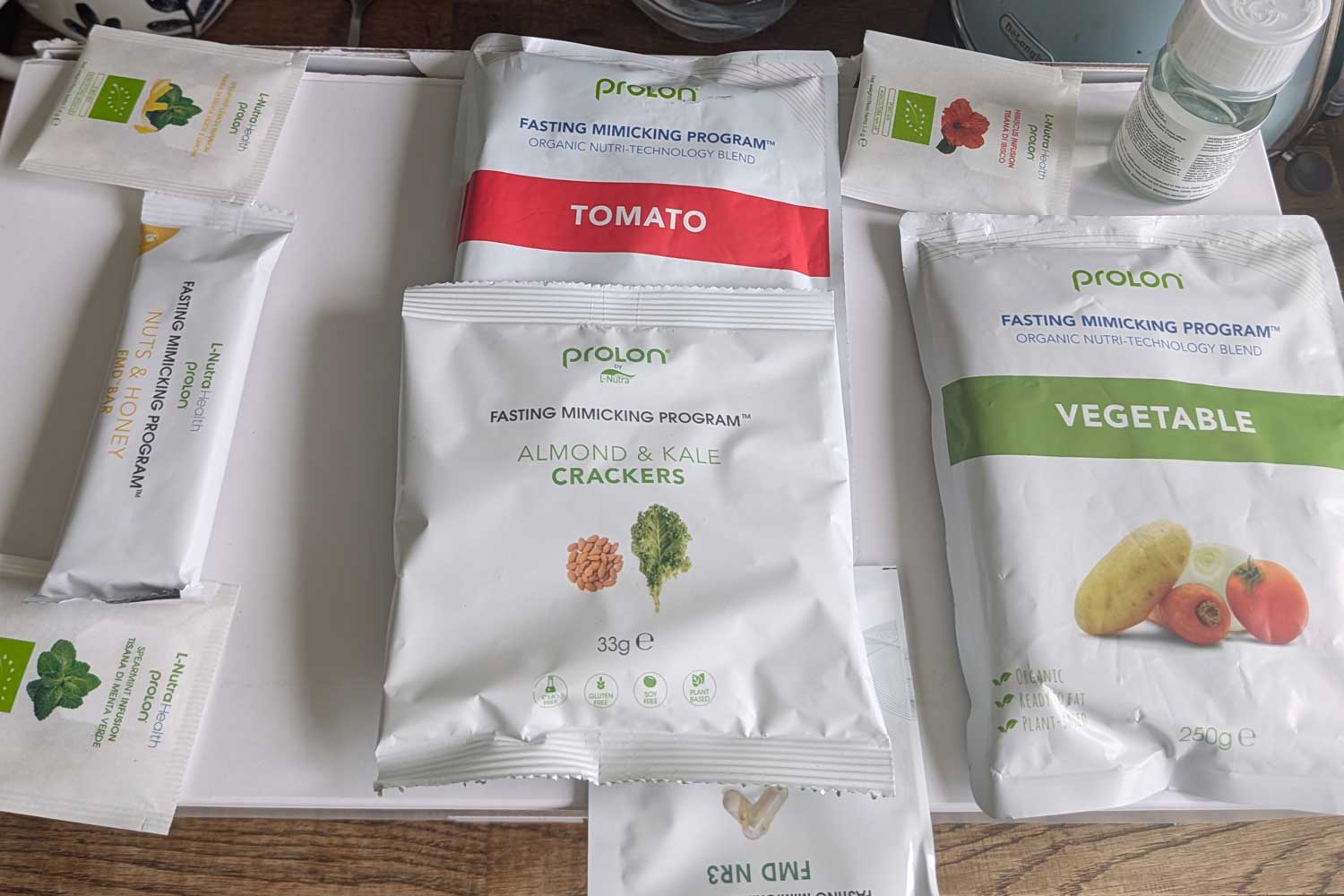
Day 3 of the ProLon Diet
Day One
I switched to decaf coffee a while ago, but forgoing my generous slug of oat milk in my coffee is challenging. The nut bar is satisfying and enough to keep me going happily until lunchtime. Lunch is more of a challenge – my family is eating a Sunday roast and I’ve got half a bowl of tomato soup, five olives and some kale and almond crackers. By mid-afternoon I’m counting down the minutes until I can eat my next snack bar, although I know I won’t get this extra bar in tomorrow’s meal kit. In the evening I get half a bowl of minestrone and a ‘choco bar’. I go to bed hungry but sleep well.
Day Two
I wake up grumpy. I don’t want to wolf down the breakfast nut bar straight away as it’s the most filling (and tasty) item of the day, but I only manage to wait until 9.30 and it’s gone by 9.31. By lunchtime I have a bit of a headache, and every email I receive about a new restaurant opening or food trend is making my mouth water. Lunch is yet another soup and some olives, and I get some olives (eight, to be precise) as my afternoon snack, which I eat while typing out a desperate email to the nutritionist I’ve been put in touch with, ProLon rep Layla Gordon, to ask if she’s absolutely sure I can’t eat anything else. She’s sure. (But she says if I’m really desperate I could have a slice of cucumber.) Tea is another soup, broccoli and quinoa, and a choco bar, which, despite not being a patch on the real thing, has the benefit of being chewable. ‘It’s not my fault you’re hungry, mum,’ my son reminds me several times throughout the evening when I am shorter than usual with him.
Day Three
Layla assured me yesterday that today would be easier. ‘Days two to three are the hardest as the body is running out of glucose and switching to ketones,’ she said. I wake up so hungry that I would swap my son for a slice of toast – so, perhaps I need a little longer. The morning nut bar is so delicious I savour every bite. At lunchtime my vegetable soup has a side of almond and kale crackers and though I didn’t enjoy them on day one, today I adore them. After lunch I find that I am, surprisingly, feeling a little better. Perhaps because I haven’t attempted much walking or movement today, as I’ve spent the day at my desk for meetings. There’s no choco bar after my tomato soup for dinner, so I go to bed after snapping at everyone in the house, including the cats, feeling that I sorely deserve a treat.
Day Four
Today I do actually feel a lot better. I have read about ‘ketophoria’, the mood and energy boost that arrives a few days into ketosis, and whether it’s because of this, or because I have a busy day in the office and no time to miss food, today completing the five days of Proton feels achievable. I am on top form in my meetings and power through my to-do list, and don’t even think about the snack cupboard before heading to bed.
Day Five
That didn’t last long. Today after enjoying my final breakfast nut bar I sulk for the rest of the day because I don’t want any more soup. I head to a friend’s house in the evening and I do, in fact, forget to take the last soup, (artichoke – my least favourite flavour) so I have a few olives for dinner and go to bed hungry. I have a terrible night’s sleep, but that might just be because I’m so excited to eat tomorrow.
Day Six
It’s over! The advice today is to eat light, liquid, plant-based meals for day six, but I have a full day of work events and I feel a bit light-headed when I wake up, so I have some wholemeal toast and peanut butter for my breakfast. It’s so delicious I want to cry.
What’s The Food Like?
Before I move on to the results, I thought it useful to rank the food on the plan from best to worst, mainly because it’s all I thought about for five days straight. The morning nut bar is by far the tastiest thing on the menu, followed by the evening choco bar. Mostly because you can chew both of them so they feel the most like real food. For this reason, the kale and almond crackers, though bland, are in at number three. Of the soups, the tomato is the tastiest, followed by the minestrone. The vegetable soup is pretty nice, but the broccoli and quinoa and artichoke soups tasted like gruel. They’re all made from organic veg, though, and do feel like they’re nourishing your body.
The Results
Though I didn’t do the plan with the hope of losing weight, I weighed myself first thing on day six, to see if I had achieved anything measurable after five days of grumpiness. I lost six pounds, almost half a stone, which is a lot more than I thought I would, and I can imagine that even bigger numbers would be achievable for those kick-starting a weight loss programme with the fast. I felt a little bit light-headed at times throughout the fast, especially on days where I had to run around after my son and dash between drop-offs and meetings, so it would be wise to choose a quiet week if you’re planning on trying ProLon yourself.
One positive outcome of the fast (beyond the promised longevity benefits, though I’m not sure I could commit to doing this on a monthly basis,) was to break the cycle of sugary snacking that I’d gotten into. I am very much a food-reward person, and tend to require a small food-based treat whenever I complete a task, (yes, much like a dog,) which over recent months have been less healthy and more biscuit-based. After the headaches of sugar withdrawal, I have been keen to continue the run, so I’ve switched my snacks to crackers with hummus or cottage cheese or olives. I’ve also swapped milk chocolate to dark chocolate to minimise the sugar intake, and I’m finding I’m eating less of this, too. I’ve also been appreciating my food a lot more, and sticking to healthy dinners to avoid bloating; I noticed the positive impact of cutting gluten and dairy from my diet completely. So while I might not be the perfect candidate for ProLon, I have been surprised at the lasting impact it’s had on my diet.
A Nutritionist’s Take
I spoke to nutritionist Kim Pearson, who has been recommending ProLon to her clients for many years, to get her take on the plan.
How does ProLon differ from other diets?
ProLon isn’t a typical diet. It’s only five days long and is specifically designed to provide the benefits of a fast, such as cellular regeneration and metabolic health benefits, while still providing nourishment. Unlike most diets that focus on daily calorie restriction or macronutrient changes, ProLon is a short, structured five day protocol based on specially designed, plant based meals.
Who is a good candidate for ProLon?
ProLon is ideal for people who want the benefits of prolonged fasting, without having to go without food. It’s also beneficial for those looking to optimise their metabolic health and / or kickstart weight loss. I often recommend it to clients to boost their weight loss, or those who have signs of suboptimal metabolic health. That said, it’s not for everyone. It’s not suitable if you’re underweight, pregnant, or have certain medical conditions, so it’s important to check with a practitioner first. You can hear from some of my clients who have tried ProLon here.
How can you extend the benefits?
ProLon has evidence-based benefits, but what you do afterwards really matters too. I advise clients to gradually reintroduce nourishing whole foods, basing meals around vegetables, healthy fats, and quality protein.
Staying off ultra-processed foods, getting at least seven hours of quality sleep each night, and incorporating daily movement also help maintain the benefits. I often recommend repeating ProLon every few months for people who are using it for long-term health optimisation.
Anything else we should know?
Yes, ProLon isn’t about quick fixes. It’s a tool, and like any tool, it’s most powerful when used intentionally and as part of a wider strategy. I see it work best when clients use it to reset, and then move forward with more awareness around their eating habits and lifestyle choices.
It’s also worth noting that while the kit makes fasting simpler, the process can still be physically and emotionally challenging, especially if you’re used to snacking or eating frequently. I always prepare my clients beforehand so they know what to expect and how to support themselves through it.
THE FINAL WORD
Kim’s right: the process, though clearly more palatable than five days of complete abstinence, is physically and emotionally challenging. I found it a lot harder than I’d anticipated, and it showed me how emotionally dependent on food I am, rather than just physically dependent. It’s helped me make some positive changes to my diet, but I wouldn’t say it’s a realistic regular choice for those with busy lives and/or dependants. If they had to live with my ProLon personality once a month I’m pretty sure my girlfriend, my son and even my cats would abandon me.
ProLon gifted Rebecca the five-day fasting kit for the purpose of this editorial review. The kit is available to buy from prolon.co.uk.




